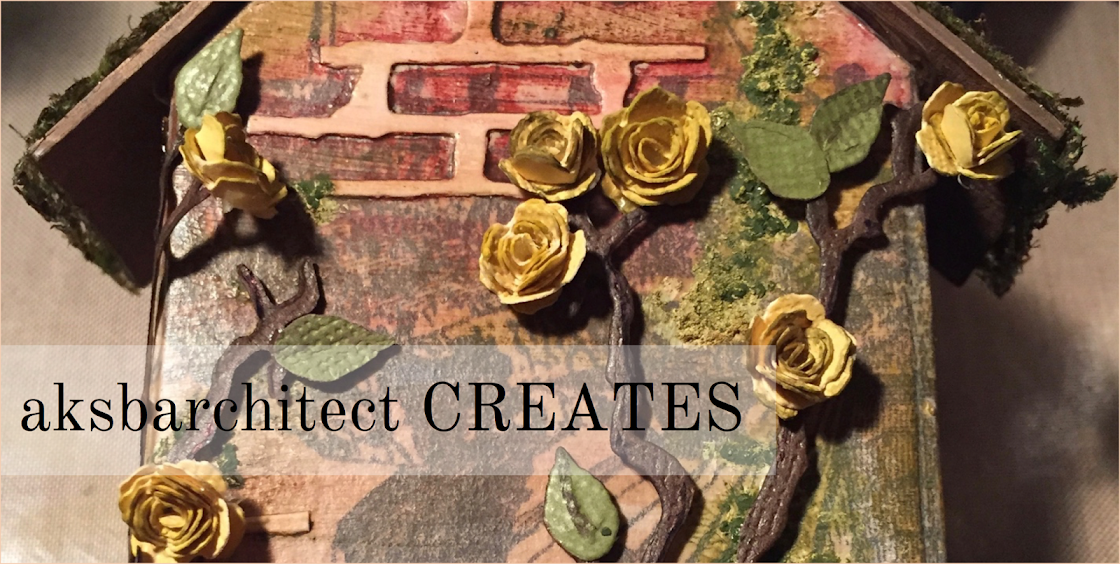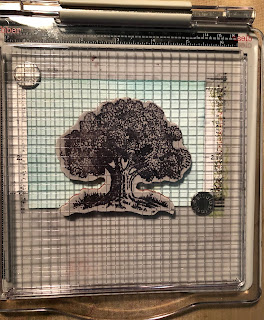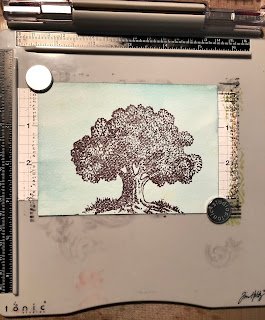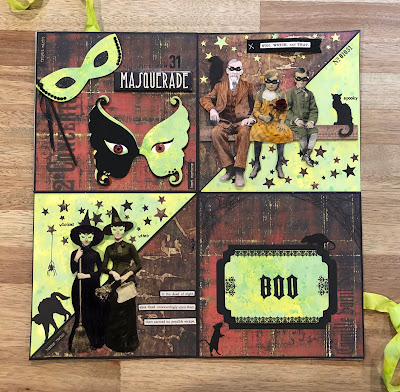Have you ever observed something so beautiful you were compelled to see what was inside?
The sheer beauty of it so incredible, you are drawn to it with no resistance.
That you succumb to the pull,
only to find that what is inside is not at all what you had expected?
The other side is different,
it is not glistening, it is somber, and quiet.
There are is no shimmering glory, only a dark and contemplative place.
This shrine was created drawing upon such an experience.
The Relics and Artifacts Gothic Arches Set spoke to me.
Throughout my creative journey I have always admired the designs of the past.
The truly gifted architects and craftsmen that created everlasting structures.
I learned of them in my architectural studies, I researched them in my field experience, I draw upon them for their principals and attention to detail. I want to create a piece that reflects these elements.
I hope to invoke the warmth and glow of the stained glass windows that would be found within gothic mullions. The incredible clarity of vibrant colors and golden details highlighting everlasting designs. The same warmth that draws you to experience it from within. The exterior faces are finished using alcohol ink and gold paint, capturing the light like a beacon. The windows are stood on end to form a bay simulating a small chapel or apse.
Inside, I envision an old stone church. One created by masons, masters at their craft. The faux stone finish is stenciled on with texture paste and painted stone by stone, just as the structure would have been erected. A "wooden" floor mimics the timber floorboards.
And within the niche created, a statue of our lady, the Mother of Mercy stands. She is sculpted from Apoxie Sculpt and a Relics & Artifacts face, as taught by my fellow Muse, Sherry Matthews, in a 2016 Live from the Tribe video. The sculpture is painted, crackled and gilded. A somber presence, a reason to pause and reflect on all of the graces we have been given.
The sheer beauty of it so incredible, you are drawn to it with no resistance.
That you succumb to the pull,
only to find that what is inside is not at all what you had expected?
The other side is different,
it is not glistening, it is somber, and quiet.
There are is no shimmering glory, only a dark and contemplative place.
This shrine was created drawing upon such an experience.
The Relics and Artifacts Gothic Arches Set spoke to me.
Throughout my creative journey I have always admired the designs of the past.
The truly gifted architects and craftsmen that created everlasting structures.
I learned of them in my architectural studies, I researched them in my field experience, I draw upon them for their principals and attention to detail. I want to create a piece that reflects these elements.
I hope to invoke the warmth and glow of the stained glass windows that would be found within gothic mullions. The incredible clarity of vibrant colors and golden details highlighting everlasting designs. The same warmth that draws you to experience it from within. The exterior faces are finished using alcohol ink and gold paint, capturing the light like a beacon. The windows are stood on end to form a bay simulating a small chapel or apse.
Inside, I envision an old stone church. One created by masons, masters at their craft. The faux stone finish is stenciled on with texture paste and painted stone by stone, just as the structure would have been erected. A "wooden" floor mimics the timber floorboards.
And within the niche created, a statue of our lady, the Mother of Mercy stands. She is sculpted from Apoxie Sculpt and a Relics & Artifacts face, as taught by my fellow Muse, Sherry Matthews, in a 2016 Live from the Tribe video. The sculpture is painted, crackled and gilded. A somber presence, a reason to pause and reflect on all of the graces we have been given.
I have been blessed with many opportunities in my creative journey,
both in the architecture field as well as the arts.
I want to thank Sandra and David Evertson for the opportunity to be part of the Relics & Artifacts team these past months,
and to wish them and my fellow Muse all the best as I continue on my artful journey.
I truly appreciate you taking the time to visit today.
~Ann
xxx
I am entering this into the following challenges:

















































